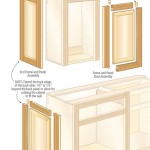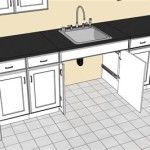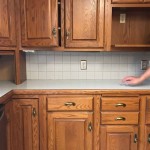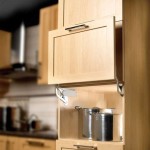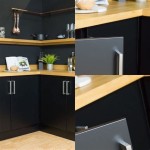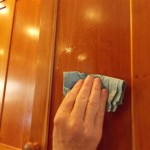China Cabinet Standard Size: A Comprehensive Guide
China cabinets, also known as display cabinets or curio cabinets, serve as elegant storage solutions for fine china, collectibles, and other cherished items. Selecting the appropriate size of a china cabinet is crucial to ensure it complements the space and adequately accommodates the intended contents. Understanding standard dimensions and factors influencing size selection is essential for making an informed decision.
Standard Height Dimensions
Height is a significant consideration when determining the appropriate size of a china cabinet. Standard height dimensions typically range from 60 inches to 84 inches. Shorter cabinets, those closer to 60 inches, are often referred to as buffet-style cabinets or sideboards and are suitable for smaller spaces or where a lower profile is desired. Taller cabinets, approaching 84 inches, provide greater vertical storage and can create a more dramatic visual impact, particularly in rooms with high ceilings.
The specific height selected often depends on the ceiling height of the room. A very tall china cabinet in a room with low ceilings might appear disproportionate, while a short cabinet in a room with high ceilings could seem insignificant. A general guideline is to allow for at least 12 inches of clearance between the top of the cabinet and the ceiling. This ensures that the cabinet does not feel cramped and allows for adequate visual breathing room.
Furthermore, the intended use of the china cabinet will impact the optimal height. If the primary purpose is to display larger items or multiple tiers of smaller collectibles, a taller cabinet with more vertical space may be necessary. Conversely, if the cabinet is primarily for storing dinnerware with occasional display, a shorter cabinet might suffice.
Standard Width Dimensions
The width of a china cabinet is another critical factor in determining its overall size and suitability for a given space. Standard width dimensions typically range from 36 inches to 72 inches. Narrower cabinets, around 36 inches, are ideal for smaller rooms, apartments, or areas where space is limited. Wider cabinets, approaching 72 inches, offer substantial storage and display capacity and are better suited for larger dining rooms or living rooms.
When considering width, it's important to account for the overall layout of the room and any existing furniture. The china cabinet should not obstruct doorways or walkways, nor should it impede the flow of traffic. It is recommended to leave at least 36 inches of clearance between the china cabinet and other furniture pieces to allow for comfortable movement.
The width of the china cabinet should also be proportionate to the size of the wall on which it will be placed. A very wide cabinet on a narrow wall can appear overwhelming, while a very narrow cabinet on a wide wall can look underwhelming. The goal is to achieve a visual balance that enhances the aesthetics of the room.
Internal shelf width also contributes to functionality. Ensure the shelves can accommodate the diameter of plates, serving dishes, or the width of displayed collectibles intended for placement. Consider whether adjustable shelves are required to accommodate varying sizes of stored items.
Standard Depth Dimensions
Depth, the measurement from the front to the back of the china cabinet, is often overlooked but plays a significant role in its functionality and space efficiency. Standard depth dimensions typically range from 12 inches to 20 inches. Shallower cabinets, around 12 inches, are beneficial for maximizing floor space and are well-suited for displaying smaller items or for use in hallways or narrow rooms.
Deeper cabinets, approaching 20 inches, provide greater storage capacity and can accommodate larger items, such as oversized platters or decorative bowls. However, deeper cabinets can also encroach more significantly into the room, so it's important to ensure adequate space is available.
The depth of the shelves is crucial for storing dinnerware. A standard dinner plate typically has a diameter of around 10 to 12 inches. Therefore, the shelves should be at least this deep to safely and securely store plates. If the intention is to store and display larger serving dishes, platters, or stemware, a deeper cabinet with correspondingly deeper shelves may be required.
Furthermore, the depth of the cabinet can impact its visual appearance. A very deep cabinet can appear bulky and imposing, particularly in a small room. Conversely, a very shallow cabinet may lack sufficient storage capacity for the intended purpose. Striking a balance between depth, storage capacity, and visual appeal is essential.
Factors Influencing Size Selection
Beyond standard dimensions, several other factors should inform the selection of a china cabinet's size. These include the available space, the style of the room, and the intended contents of the cabinet.
The available space is the most obvious constraint. Before purchasing a china cabinet, accurately measure the area where it will be placed. Consider the height, width, and depth of the space, as well as any obstructions, such as doorways, windows, or radiators. Ensure that there is sufficient clearance around the cabinet for comfortable movement and access.
The style of the room should also be considered. A modern, minimalist room might be best complemented by a sleek, narrow china cabinet with clean lines. A traditional, ornate room might benefit from a larger, more elaborate cabinet with decorative detailing. The goal is to select a cabinet that harmonizes with the existing décor and enhances the overall aesthetic of the room.
The intended contents of the cabinet are perhaps the most important determinant of size. Carefully assess the items that will be stored and displayed in the cabinet. Consider the size, shape, and quantity of these items. Ensure that the cabinet has adequate shelf space, depth, and height to accommodate the intended contents. It may be helpful to create a detailed inventory of the items to be stored and used this to inform the size selection process.
Consider future needs. Will the collection of china or collectibles expand over time? If so, it may be prudent to select a slightly larger cabinet to accommodate future growth. Furthermore, consider whether the cabinet will be used for storage as well as display. If so, additional space may be required for items that are not intended for display, such as linens or serving utensils.
Considerations for Placement
The placement of the china cabinet significantly impacts its perceived size and functionality. Consider the following factors when determining where to place the cabinet:
Lighting: Ensure adequate lighting is available to showcase the items inside the cabinet. Natural light is ideal, but if natural light is limited, consider adding internal lighting to the cabinet or placing it near a source of artificial light.
Traffic Flow: Avoid placing the cabinet in a high-traffic area where it could be easily bumped or damaged. Position it in a location where it is easily accessible but does not obstruct the flow of movement.
Visual Balance: Consider the visual balance of the room. The china cabinet should complement other furniture pieces and not overwhelm the space. Avoid placing it in a corner where it feels cramped or in a location where it blocks a view.
Wall Support: Ensure the wall where the china cabinet will be placed is strong enough to support its weight, especially when filled with heavy items. If necessary, reinforce the wall or consider a cabinet with a wider base for greater stability.
Ultimately, selecting the appropriate size of a china cabinet requires careful consideration of various factors, including standard dimensions, available space, room style, intended contents, and placement. By taking these factors into account, it is possible to choose a china cabinet that is both functional and aesthetically pleasing, enhancing the beauty and utility of the space.

Miya32 Relax Mdf Material Display Cabinet White Furnituredirect Com My

China Cabinet With Tempered Glass Doors Door Storage 78 7 W Com

Grey Painted Large Glazed Dresser Sideboard Dining Room Kitchen Storage Display Cabinet Cupboard China Made In Com

Classic Design Corner Hutch Dimensions Cabinet Navy Painted Furniture

Colfax Solid Wood China Cabinet Lifetime Warranty From

10 Diffe Types Of China Cabinets

Colfax Solid Wood China Cabinet Lifetime Warranty From

Amira Vintage Walnut And Charcoal Black Arch Display Cabinet World Market

Curio Vs China Cabinets What S The Difference
Related Posts



